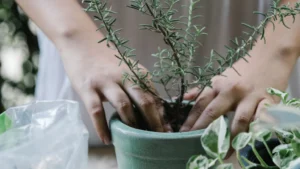India’s diverse climate and rich biodiversity offer a vast array of options for outdoor gardening enthusiasts. Whether you reside in the tropical south, the arid west, or the temperate north, there are plenty of plants that thrive in India’s varied conditions. In this guide, we’ll explore some of the best outdoor plants for India, from vibrant flowering species to resilient foliage plants.
- Hibiscus (Hibiscus rosa-sinensis): Known for its striking, showy flowers, the Hibiscus is a quintessential outdoor plant in India. With its ability to withstand heat and humidity, it flourishes in tropical and subtropical regions. Hibiscus comes in a variety of colors, including red, pink, yellow, and white, making it a popular choice for gardeners seeking vibrant blooms.
- Bougainvillea (Bougainvillea spp.): No Indian landscape is complete without the vibrant hues of Bougainvillea cascading over walls and fences. This hardy, drought-tolerant plant thrives in hot, dry conditions, making it ideal for the arid regions of India. Bougainvillea’s bracts come in a range of colors, including magenta, purple, orange, and white, providing year-round color to gardens.
- Jasmine (Jasminum spp.): Renowned for its intoxicating fragrance and delicate white blooms, Jasmine is a beloved outdoor plant in India. It prefers warm, humid climates and thrives in sunny locations. Jasmine is often used to adorn trellises, fences, and balconies, filling the air with its sweet scent, especially in the evenings.
- Indian Borage (Plectranthus amboinicus): Indian Borage, also known as ‘Ajwain Patta’ or ‘Country Borage,’ is a versatile herb commonly found in Indian gardens. Its succulent leaves have a strong, aromatic flavor and are used in traditional cooking and herbal remedies. Indian Borage thrives in partial shade and is relatively low-maintenance, making it a must-have for culinary enthusiasts.
- Neem (Azadirachta indica): The Neem tree holds a revered place in Indian culture for its medicinal properties and ecological significance. Its bitter-tasting leaves and seeds are used in Ayurvedic medicine for their antibacterial, antifungal, and insecticidal properties. Neem trees thrive in hot, arid climates and are valued for their shade, drought tolerance, and pest-repellent qualities.
- Frangipani (Plumeria spp.): With its waxy, fragrant flowers and glossy green foliage, Frangipani adds a touch of tropical elegance to Indian gardens. This deciduous tree thrives in warm, humid climates and produces clusters of flowers in shades of white, pink, yellow, and red. Frangipani is often planted near temples and religious sites for its auspicious symbolism.
- Marigold (Tagetes spp.): Marigolds are a staple in Indian gardens, prized for their vibrant blooms and pest-repellent properties. These hardy annuals thrive in full sun and well-drained soil, making them perfect for India’s warm, sunny climate. Marigolds are commonly used in religious ceremonies, festivals, and as decorative borders in gardens.
Conclusion: From the lush greenery of the tropics to the arid landscapes of the desert, India’s outdoor plants reflect the country’s rich cultural and ecological diversity. Whether you’re a seasoned gardener or a novice enthusiast, there’s a wealth of options to explore and enjoy. By selecting the right plants for your region’s climate and conditions, you can create a beautiful outdoor oasis that reflects the natural splendor of India.



